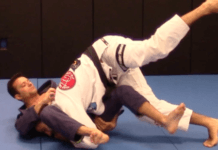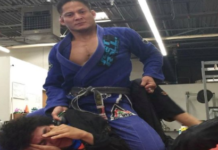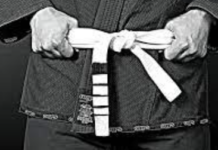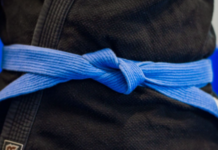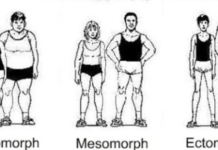Weight cutting is part of every BJJ and grappling sports practitioner life from the first time they made a decision to stand on a mat as a competitor. A long tradition of different ways of cutting the weight in BJJ and grappling sports led to the creation of many myths about this particular topic. Although it is a common thing in combat sports, you will read about many different approaches to weight cutting that will try to convince you to do particular cutting regime. It can easily be said that there is no consensus about this topic in BJJ and grappling sports community. In further words, I will try to debunk some of the myths and propose some of the possible solutions for long term cutting in BJJ and grappling sports and also short term cutting plan for BJJ and grappling competitions.
How to cut weight for BJJ and grappling competitions?
Time-dependent weight cutting
First of all, it is necessary to split this topic into two different parts. Each of them has its own principles and course that must be respected. First one is long term weight cutting plan and it is in direct relationship with your strength and conditioning workout routines and long term diet plans. The second one is short term weight cutting plan.
The main thing that separates those two approaches is implementation time, as you can assume from their names. The other thing that differentiates them is “aggressiveness” in cutting approach and different processes in your body which take place inside your body while you do one of them. In long term plan, targeted area is the percentage of body fat and percentage of lean muscle mass. On the other hand, in short term plan, you target fluids volume and gut content volume.
Long term weight cutting plan for BJJ and grappling Competitions
As the name suggests, this plan is happening during weeks or even months. In this BJJ cutting plan you maneuver with percentage of body fat and muscle mass percentage. It is obvious that your goal here is to reduce body fat while you maintain the same percentage of muscle mass. By doing that, your strength/weight ratio does not decrease. But how do you do that? The Body fat is generally stored energy so we can arrange body fat loss in BJJ in two ways. The end goal in both cases is energy deficit. The first way is to reduce energy intake and the second one is to increase energy expenditure during your fat loss workout sessions.
The first example is when energy intake is too high so your energy expenditure during the day can not “cover” it. At the end of the day you have an energy deficit and it results with fat gain process. As you assume, in this example you take a lot of unnecessary calories during days which cannot be expended by your body. So, the thing you need is well balanced, BJJ fat loss diet plan. Your leading thought here is not starvation but BJJ diet plan that will result in strategic food selection while providing a good amount of fuel and nutrients. That will support your recovery after workouts are done.
When it comes to particular macronutrients, a keyword is a balance. When creating your diet plan for BJJ have macronutrient energy provision on your mind. Carbohydrate and proteins have 4 kcal while fat has 9 kcal per gram. When cutting is actual, your BJJ diet plan foundations are a quality source of proteins and carbs. Also, because of high calories provision fat intake should be limited.
Fat intake source should primarily be from high-quality oils or food like nuts. You should not totally run away from fats. Just keep their intake in outlined limits of your plan. Also, be careful about carbs intake. They are your fuel for long BJJ workout sessions and if you want to last on the mat, you need them. Carbs restriction can occur in your rest days. Key with carbs is to moderate them not to kick them out of your meals. In the end, to avoid hunger you need to get a quality snack. Different kind of fruits and vegetables as a snack meal here is must have in your BJJ cutting plan.
The other way to reduce the body fat percentage in BJJ using long term weight cutting plan is energy expenditure. To encourage calorie deficit you can expand the volume of your BJJ fat loss workout sessions, or you can add a little bit more intensity in current BJJ routine. Every movement needs energy. More you move, more energy you will consume. In total, with a good diet plan, it will result with energy deficit which will lead to fat loss. To apply this rule, no rigid routine is needed.
Just add a few more reps in your BJJ training routine, add few more sets in your BJJ strength training. Also in everyday life, take the stairs, ride a bike or take a walk in your rest days. At the end of the week or month, everything counts. Every good meal, every step, and every rep more you did. This is a long term process, but I am sure you will be thrilled with the end results.
Short term weight cutting plan for BJJ and grappling competitions
If you are a BJJ practitioner, the first thing that comes out of your mind when you read the paragraph title was water dropping. While it will give you the end result, lower weight on the BJJ weigh-in day, there are numerous possible consequences of water reduction. First of all, it can affect your strength output level in BJJ, reduce both, your aerobic and anaerobic capabilities, slow down your reactions and affect your cognitive abilities. Even with the small dehydration percentage (2-3% of body mass) the real problems, like heat tolerance during high-intensity competition could happen.
To avoid those scenarios, strategic food intake for the competition is a better solution. It will result in pre-competition reduced stomach content. You will get the same results as if you were fasting for weight loss. On the other hand, your body will be provided with energy that is crucial for your BJJ competition. So, calculated intake with mild fluid loss is the right way to do short term cutting plan in BJJ.
Low Fiber Diet
This approach consists of low fiber food selection in 24-48 hours before the scale will take place. This will minimize the amount of food that stays in the gut, while you get pre-competition fueling. During this 2-3 pre-competition low fiber diet period, you can increase fat intake to provide energy. Fat intake is needed because you are not trying to enter an energy deficit state. If all of this is not enough for you, then the further weight loss in BJJ should occur through fluid loses. If that is the case, you should avoid high salt intake in pre-weigh-in days.
This will help to minimize fluid retention. Also, 24 hours before the competition you should cut the amount of fluid intake too. This can provide approximately loss of 1% of body mass. A good tactic to lower additional 1-1.5% of your body mass is pre-competition training. It will, besides sweat, also provide good mobility and muscle activation which are crucial to avoid injuries during competition.
Conclusion
Matches are planned in year calendar, your diet and workout phases should also be carefully planned. You need to be familiar with terms such are long and short term weight loss and fueling tactics in BJJ. Besides that, you have to be familiar with your body and metabolism. Every organism is different and very individual. Be sure to know what fits you the best before you start following some guidelines. Always be sure to take your knowledge from evidence-based source and to continually plan and review your nutrition plans in BJJ.




